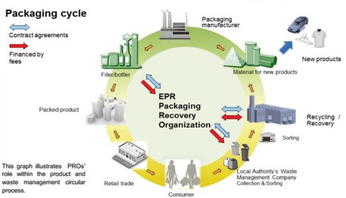Advances in Slot Die Coating for Energy Storage Devices
Presented by Mark Miller, Coating Tech Slot Dies
From lithium-ion batteries to capacitors to solar panels, one common feature is they are all produced through a coating method.
Energy storage devices describe a wide variety of products. From lithium-ion batteries to capacitors to solar panels, energy storage devices are as diverse as there are research centers to study them. But for many of them, the common feature is that they are produced through a coating method. The line of definition comes from whether the energy storage active ingredient is coated and then dried down to the required thickness, or if the active ingredient is deposited in micro and nano layers to get up to thickness.
Coating and deposition techniques both have their advantages and disadvantages, but the main consideration is whether the active ingredient can be fluidized for coating. Fluidization requires solubility of the active materials into a chosen solvent. Utilizing the energy storage active ingredients in this fluidized form create some challenges.
The first consideration is whether the active ingredient forms a suspension or a solution. Most current energy storage applications present the fluid for processing in the form of a suspension. This makes coating a little more difficult than a true solution coating. Energy storage active ingredients in suspension lead to special consideration because they may have a residence time before falling out of suspension. This can be recognized as flow rate variations occur due to viscosity changes with the suspension. Care should be taken to monitor the fluid viscosity throughout a production run.
Another consideration is the coating of the suspension. In high shear or narrow gap applications, the energy storage active ingredients may agglomerate and form larger particles that will not pass through the coating system. These are commonly viewed as pressure spikes in the fluid delivery system or coating streaks at the coating head to substrate interface. Keep the fluid moving and reducing residence time and dead flow zones are critical to success.
After coating, another consideration would be the effect of the drying and curing of the energy storage fluid coating. If not properly stabilized and controlled during the time energy is added to the product, the solvent may bloom to the surface or air bubble may form. Drying and curing need to be studied with as much attention to detail as the flow of the fluid within the coating system itself.
Energy storage coatings are further complicated because of the economic need to coat the product intermittently on a continuous web. Keeping the fluid in constant movement helps reduce the issues associated with the start and stop phenomena related to coating patches. To properly monitor the fluid flow, pressure gauges within the direct coating system in addition to the recirculation loop should be added. Balancing these pressures during operation allow for improved coating performance.
The world has not seen all the chemistries, products, and processes to be developed for the energy storage industry. But as these new slurries and equipment are developed, the fundamental concept of rheological understanding, fluid flow control, pressure balances, and simulation studies will ensure that the energy storage products of the future are robust enough for commercialization.
This post is for paying members only
SubscribeAlready have an account? Log in

